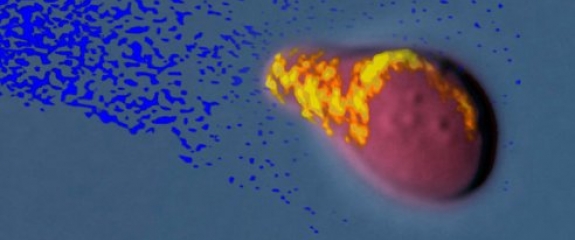A multitool for cells: Understanding the sense of smell in cells

A frequent problem faced by cells is that they are surrounded by a promising cloud of scent and must determine the direction of its source. Nerve cells, for example, form long extensions that are attracted to signals from other cells in order to produce the network that forms the nervous system; similarly, scavenger cells recognise the scent of harmful germs in order that they can pursue and destroy them.
But how do cells sense these scent signals, which become weaker and weaker with increasing distance from the source? How do cells 'read' this weakening of the signal – technically referred to as a signal gradient – in order to steer their growth or movement towards the signal's source? How spatial signals are sensed is a fundamental question facing biology – and until now this riddle has remained largely unsolved.
Now, a possible solution has been presented by researchers led by ETH Professor Matthias Peter of the Institute of Biochemistry. Yeast cells have a very fine, adjustable multitool that recognises chemical signals, processes them accordingly, and initiates the correct response – growth towards the source of the signal. Yeast cells are therefore able to smell the location of potential sexual partners in their surroundings, so that they can grow towards them.
The biologists conducted their study using a combination of microscopic observations and a computer model that they developed through an interdisciplinary collaboration with researchers from the Automatic Control Lab under Heinz Koeppl (now at TU Darmstadt).


